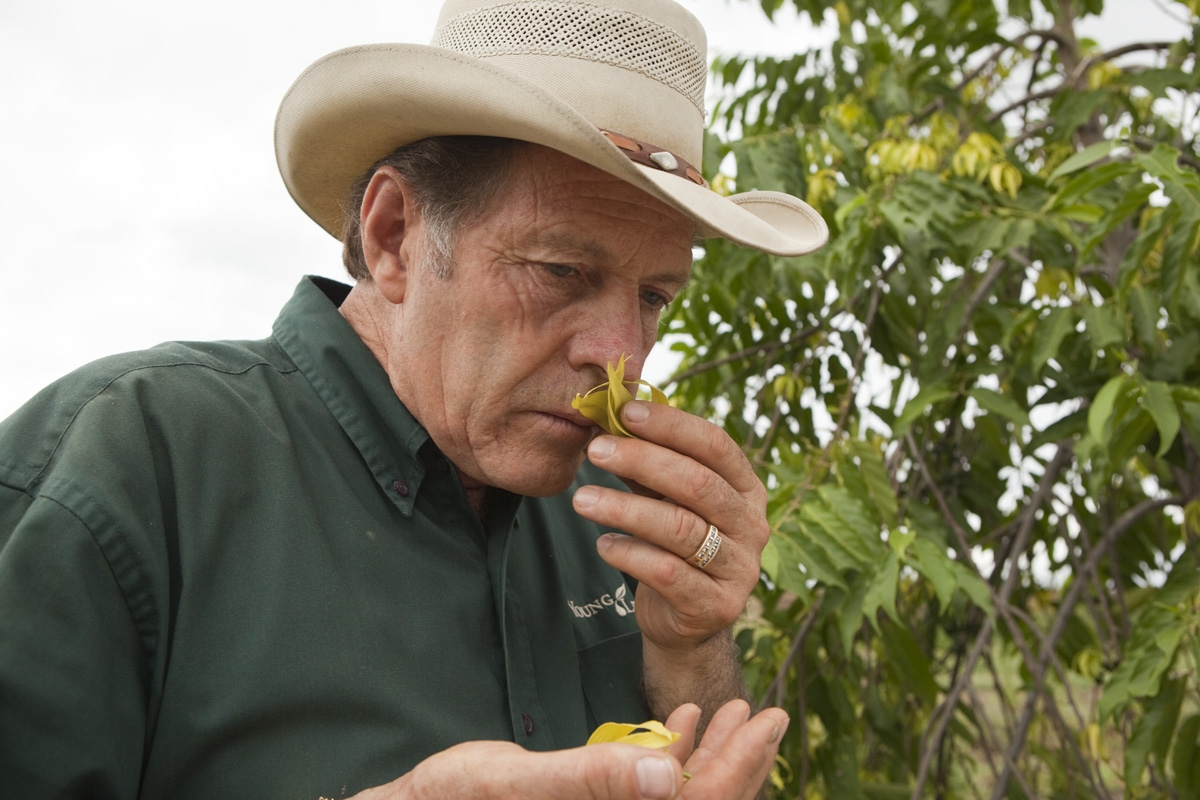The Exotic Smell of Ylang Ylang

Gary Young teaches his Ecuadorian workers to recognize the pure, sweet fragrance of a perfectly mature ylang ylang flower.
Now how do we know when the flower is mature and right for picking? That is really important to know.
I teach my employees who work in the fields to pick the perfect, mature flower and smell it and smell it and smell it until they build a memory of the smell. Then I have them pick and smell a flower that is oxidized so that they can smell the difference. The oxidized flower has a sour note, almost like it is a little rancid. It still has a nice fragrance, but they can smell that faint sour note; it’s very mild, very little, but it’s there.
When others pay a picker by the kilo, they will get green, yellow, and oxidized, shriveling, brownish-yellow flowers. These will all go in the basket, because that picker wants to make as much volume as he can because that’s how he is paid. And, unfortunately, in the commercial farms, that is what happens.
Now what makes that bad? When the flower starts to oxidize, the compounds start to hydrolyze, creating a sour smell that can affect the oil a little or a lot. The smell of ylang ylang is exquisite, and we don’t want anything less than that most exquisite smell.
Perhaps the majority of people wouldn’t know the difference, but it’s like eating an organic peach ripened on the tree or a non-organic peach picked slightly green and then left to ripen on the counter or in a box. The peach still tastes wonderful until you taste the organic, ripened peach from the tree. Then that is the only kind you want.
I remember when we first went to Ecuador and started eating the fresh mangos and bananas. We were amazed at how delicious they were, but prior to going to Ecuador, we didn’t know the difference.


Would you like to share your thoughts?
Your email address will not be published. Required fields are marked *